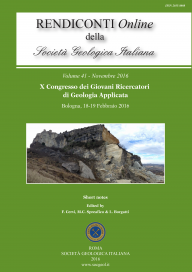
Numerical modeling of regional groundwater flow in the Adda-Ticino Basin: advances and new results
Luca Alberti (a), Martino Cantone (a), Loris Colombo (a), Silvia Lombi (a) & Alessandra Piana (b)
(a) Dipartimento di Ingegneria Civile e Ambientale, Politecnico di Milano, Piazza Leonardo da Vinci, 32, 20133, Milan, Italy. E-mail: luca.alberti@polimi.it
(b) ARPA Lombardia- Settore Monitoraggi Ambientali U.O.C. Risorse Idriche, via Rosellini 17, 20124 Milan, Italy. E-mail: a.piana@arpalombardia.it
Volume: 41/2016
Pages: 10-13
Abstract
The Adda Ticino basin is a densely-populated area, dependent massively on groundwater resources not only for industrial uses but also for agricultural and domestic ones. A large scale hydrogeological assessment study over 8000 Km2 area northwest of Lombardy Region was done in reason to implement a groundwater flow model. The main objective was to give a quantitative estimate of groundwater budget into the Adda-Ticino basin and to deliver a tool to support Public Authorities in regional groundwater management required by the European Directive 2000/60/CE. The approach consists of improving the hydrogeological conceptual model and better define hydraulic properties of the aquifer units and all components in the basin influencing the groundwater flow (rivers, wells withdrawal). Then the collected GIS information were added into the numerical model Modflow. Regional steady-state flow was calibrated under current stress conditions with an inverse calibration code (Doherty, 2005) mainly by changing hydraulic conductivity and vertical recharge inflow. The water mass balance computed shows a total flow of 3279 Mm3/y. Vertical recharge provides 65% of the total groundwater inflows, whereas the 30% is coming from pre-Alps up-gradient boundary. Discharge from basin aquifers occurs through flow to rivers (60%), groundwater supply wells (30%) and underground outflow at the S-SE border (10%).
Keywords
Get Full Text